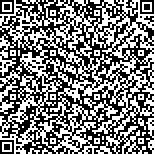| 摘要: |
| 运用传统细菌分离培养与分子生物学技术相结合的方法, 对2008 年11 月至2009 年1 月冬季刺参(Apostichopus japonicus Liao)养殖池塘环境(养殖水、底泥、附着基)及刺参肠道内的细菌菌群进行了分析。应用平板稀释涂布培养计数法测得刺参养殖池塘水体、底泥、附着基和肠道细菌数量分别为0.75×102~1.4×104 cfu/mL、8.7×104~8.1×105 cfu/g、3.8×105~2.8×106 cfu/g、7.1×105~1.5×107 cfu/g; 根据形态学差异从培养所得的细菌中筛选得到22 株菌, 用限制性内切酶Rsa I 和Msp I 对所分离菌株进行ARDRA (Amplified rDNA Restriction Analysis)分析, 这22 株菌被分为8 种不同的分类单元(Operational Taxonomic Unit, OTU), 其中OTU2 与OTU3 所包含的菌株分别占分离菌株种数的30%和20%; 此外,作者对不同环境培养所得的优势度最高的细菌进行分子鉴定分析。结果表明: 水环境中优势菌为施氏假单胞菌(Pseudomonas stutzeri)、门多萨假单胞菌(Pseudomonas mendocina)及巨大芽孢杆菌(Bacillus megaterium), 沉积物中优势菌为巨大芽孢杆菌(B.megaterium)、施氏假单胞菌(P.stutzeri)、苏云金芽孢杆菌(Bacillus thuringiensis), 附着基中优势菌为巨大芽孢杆菌(B. megaterium)、苏云金芽孢杆菌(B.thuringiensis), 灿烂弧菌(Vibrio splendidus), 肠道中优势菌为巨大芽孢杆菌(B. megaterium)、苏云金芽孢杆菌(B.thuringiensis), 灿烂弧菌(V. splendidus)、施氏假单胞菌(P.stutzeri)。通过对冬季刺参池塘细菌菌群多样性分析和优势菌鉴定, 为筛选低温益生菌和防治刺参疾病提供了有益参考。
|
| 关键词: 刺参(Apostichopus japonicus Liao) 肠道菌群 ARDRA 分子鉴定 16S rDNA |
| DOI: |
| 分类号: |
| 基金项目:国家自然科学基金项目(30901120); 国家高技术研究发展计划项目(2006AA100313); 山东省科技发展计划项目(2004GG2205116);中央级公益性科研院所基本科研业务费专项 |
|
| Bacteria community in the intestine and culture environment of Apostichopus japonicus in winter |
|
LI Bin,RONG Xiao-jun,LIAO Mei-jie,CHEN Gui-ping,ZHANG Zheng,WANG Yin-geng,XUE Tai-shan
|
| Abstract: |
| Studies on the bacteria community in the intestine and culture environment of Apostichopus japonicus in winter were conducted using tranditional bacterial cultivation method combined with molecular biology techniques during the period between November 2008 to January 2009. The total numbers of bacteria in the pond water, the sediment, the cultch and A. japonicus intestine, estimated by the tranditional bacterial cultivation method, ranged from 0.75×102 to 1.4×104 cfu/mL, 8.7×104 to 8.1×105 cfu/g, 3.8×105 to 2.8×106 cfu/g and 7.1×105 to 1.5×107 cfu/g, respectively. Twenty-two strains were isolated judged by the morphological characteristics of bacteria cultured on the plates. ARADA analysis with restriction enzymes Rsa I and Msp I revealed that the 22 strains were divided into 8 Operational Taxonomic Units (OTUs), which were dominated by OTU2 and OTU3 that accounted for 30% and 20% of the total isolated strains, respectively. Molecular identification was employed to identify the dominant bacteria in different environments. It was shown that the dominant bacteria were Pseudomonas stutzeri, P. mendocina, and Bacillus megaterium in the pond water; B. megaterium, P. stutzeri, and Bacillus thuringiensis in the sediment; B. megaterium, B. thuringiensis, and Vibrio splendidus on the cultch; B. megaterium, B. thuringiensis, V. splendidus, and P. stutzeri in the sea cucumber intestine. The result of this experiment may be helpful for hypothermia probiotics isolation and disease prevention in sea cucumber culture.
|
| Key words: Sea Cucumber Intestinal bacteria ARDRA Molecular identification 16S rDNA |
